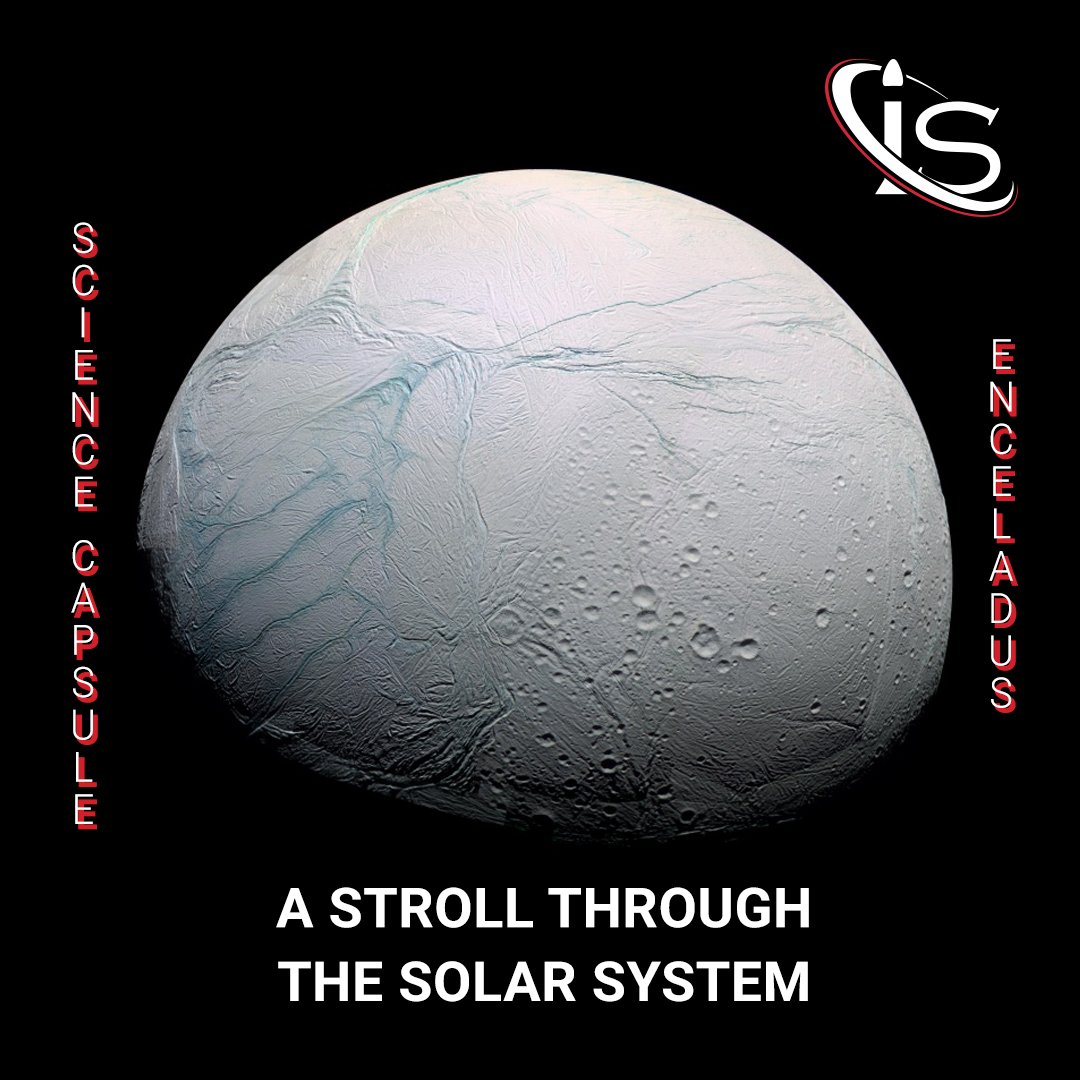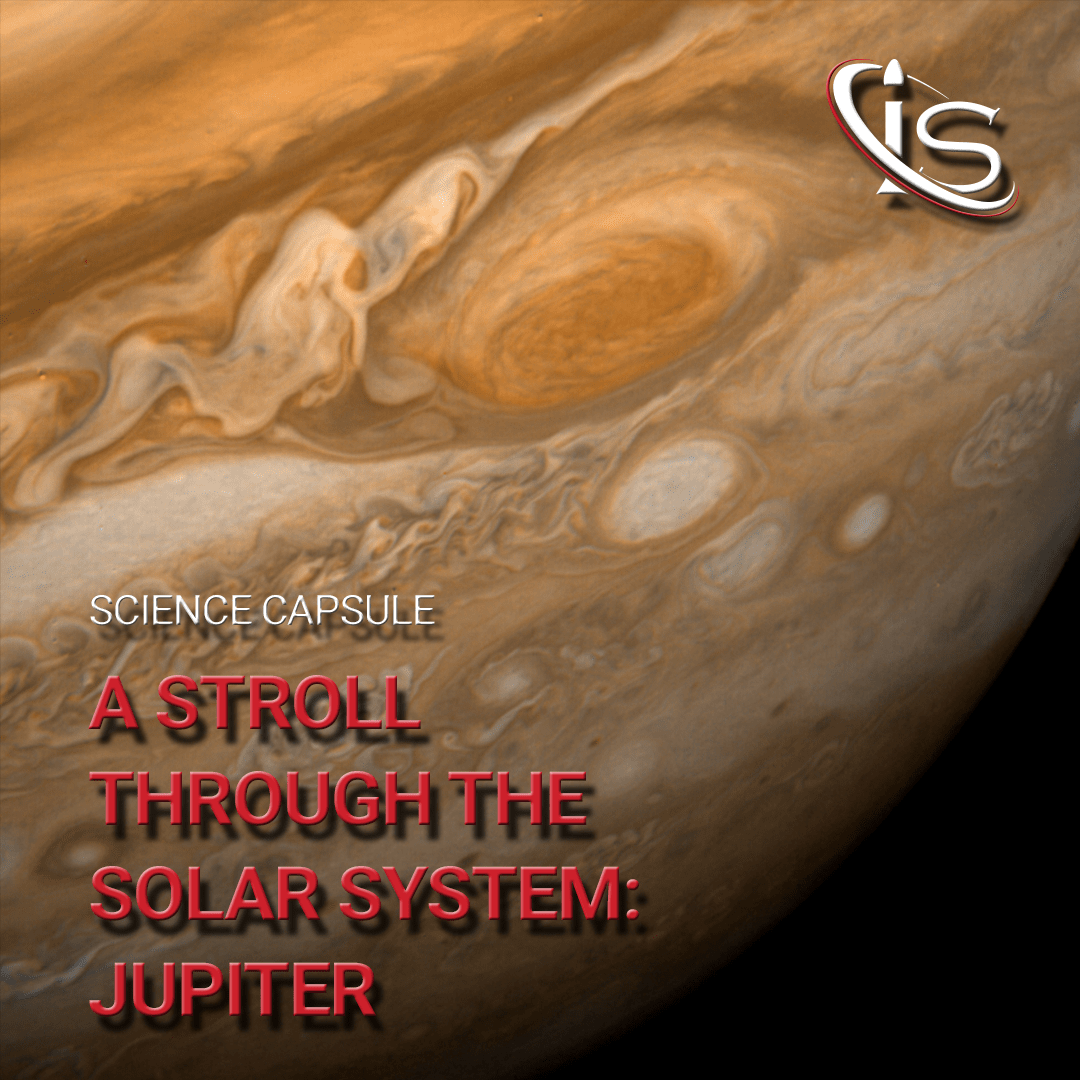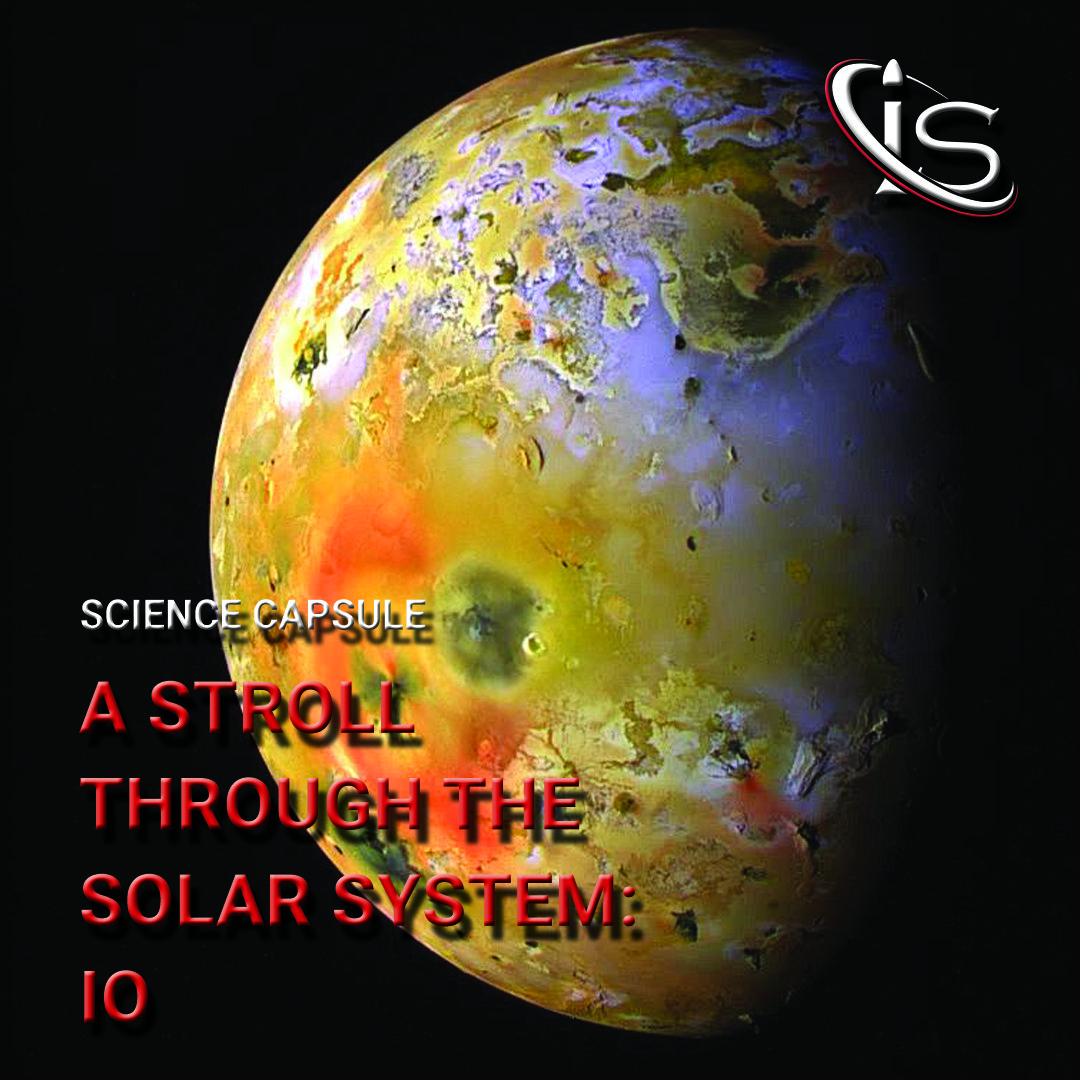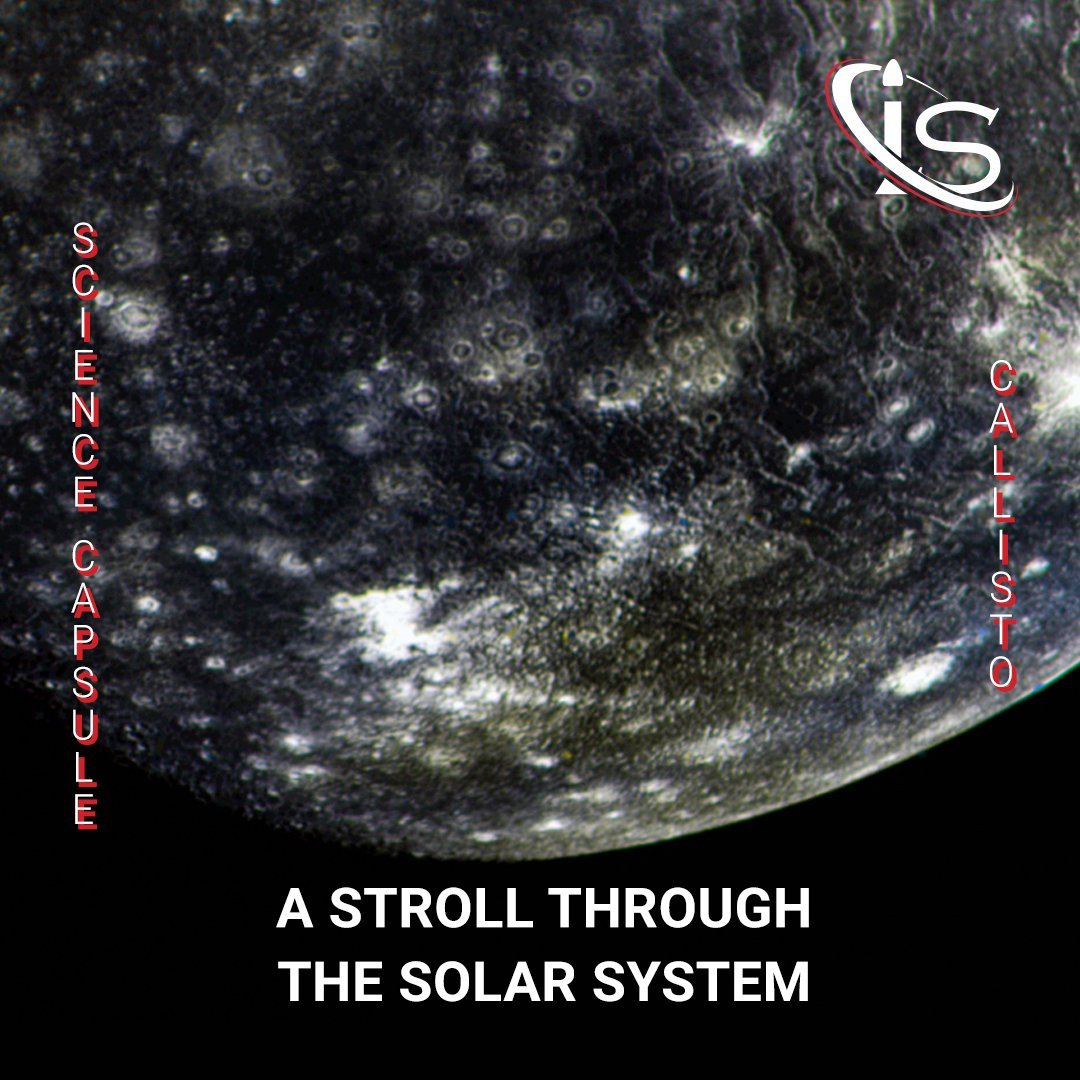Hello space aficionados and welcome to another installment of everyone’s favorite stroll series. As you can tell from the title, this capsule will be all about Jupiter’s moon, Ganymede. This is quite the fascinating celestial body, as it is the largest moon in the entire Solar System, while also having substantial evidence for saltwater oceans. With all this in mind, let’s start exploring this wonderful satellite.
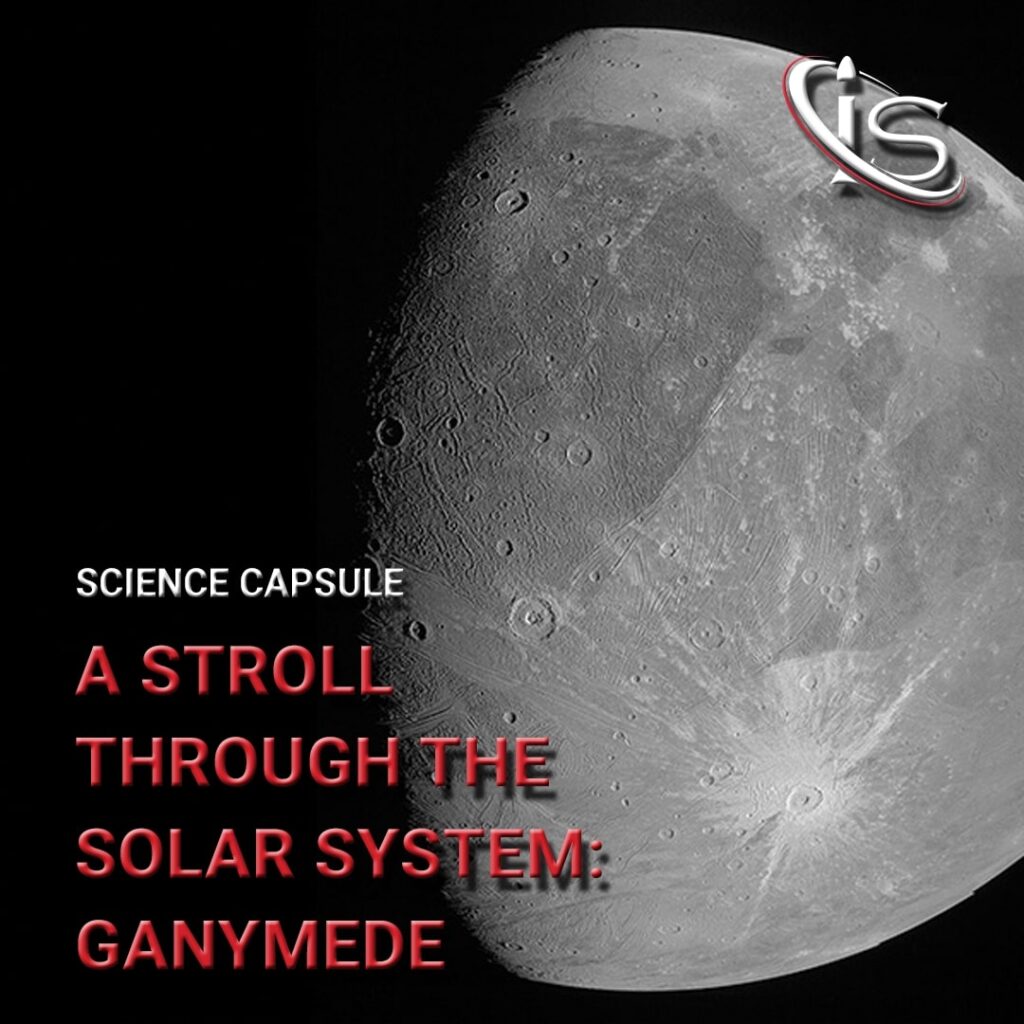
The Biggest Moon for the Biggest Planet
It makes sense that the largest planet in our system would also host the largest moon. But the size of Ganymede is truly astonishing. Not only is it bigger than any other satellite around, its size actually exceeds both former planet Pluto and current planet Mercury. Yes, with a radius of 2,631 km, Ganymede would be more than large enough to be considered a planet. If it met any of the other conditions, that is. And if you would like to learn more about what constitutes a planet, you can check this other space capsule.
Planetary Resonance
The way Ganymede orbits Jupiter is quite interesting. Located at 1,070,000 km from the planet, it is the third of the 4 Galilean moons when it comes to its distance from Jupiter. It also takes Ganymede about 7.155 Earth days to complete one orbit around its planet. What is really fascinating, however, is the way Ganymede, Europa, and Io’s orbits are intertwined. For every orbit Ganymede completes around Jupiter, Europa completes two, and Io four. This phenomenon is described as resonance, which is a term often found when dealing with waves.
The basic concept is that the periods for two separate objects to complete a recurring pattern are the same as or multiples of each other. This orbital resonance is also what leads Io to experience such massive tidal forces, as the gravitational pulls from Ganymede and Europa combine to act on it simultaneously. As a bonus fun fact, Callisto is the only Galilean moon not in resonance with the rest. But we will talk more about why that is in its own stroll.
Going back to Ganymede’s orbit and it has one more defining trait. That is, it is tidally locked. This means that the same face of this moon will face Jupiter at all times. The same phenomenon applies to our Moon, and if you would like to learn more about the physics behind it, you can check out the capsule we did on our galactic companion.
More Water than Earth?
We can now start talking about Ganymede’s structure. This moon is divided into three sections: an iron core, a rocky mantle, and a mostly icy spherical shell which culminates in its surface. There are also irregular lumps beneath this surface, which might be rocky formations supported by the shell of ice. This would suggest that Ganymede’s ice is strong enough to support said rocks; however, there is also another possible explanation, involving piles of rocks lying at the bottom of the ice.
What is even more interesting is that Ganymede might actually hold more water than Earth. Scientists currently believe that a saltwater ocean could be found beneath Ganymede’s surface, with a thickness of 100 km — 10 times as much as our own. This ocean is, supposedly, buried beneath 150 km of icy crust.
This hypothesis was first corroborated by NASA’s Galileo spacecraft, in 1996, as it picked up evidence of a magnetic field emanating from Ganymede. The Hubble telescope would then provide further evidence of a saltwater ocean as well as a thin oxygen atmosphere.
A Lunar Magnetosphere
Since I brought up Ganymede’s magnetic field and atmosphere, this seems like as good a time as any to start taking about them. Let’s start off with the magnetic field.
As I just mentioned, the Galileo spacecraft was the first to identify Ganymede’s magnetosphere. In fact, as it was orbiting Jupiter, this machine picked up on static noise cause by the moon’s magnetic field. But random interference noises are not the only effects these charged particles have. The far more interesting one is the presence of aurorae around Ganymede. These are, in NASA’s own words: “ribbons of glowing, hot, electrified gas, in regions circling the north and south poles of the moon”. And I really like this description, which is why I decided to not try and change it.
Ganymede’s magnetosphere is also in a rather unique situation. Being so close to Jupiter, it of course is completely embedded in Jupiter’s own massive magnetsphere. This causes the aurorae on this moon to change with Jupiter’s magnetic field, in what is best described as “rocking back and forth”. Again NASA really seems to have these descriptions down to a tee. These changes are actually what inspired the team, led by Joachim Saur, to use the Hubble telescope to learn more about what is inside Ganymede.
There’s Oxygen in the Air
Moving on to the atmosphere, and there is not quite as much to talk about here. Except for the fact that Ganymede’s might contain oxygen, that is. Once again, this discovery was first made by Hubble. Scientists believe that this oxygen would be originating from the moon’s icy surface.
Ganymede’s atmosphere is also very thin. This means that, similarly to Mercury, it cannot trap heat very well. However, unlike the closest planet to the Sun, Ganymede is located quite a ways away from our star. This leads to frigid temperatures, as its climate will range from 90 to 160 Kelvin, or -183.15° to -113.15°C. And I have said this before, but this still holds true: when Kelvin becomes easier to use, that is when you know the temperatures must be really cold.
A Surface Similar to Another Moon
It is now time to talk about Ganymede’s surface, and some of this may sound familiar. The exterior of this moon can be divided into two terrains: a dark cratered one, which makes up 40% of it, and a light grooved one, which makes up the rest. Now, while not identical to our Moon, it does still remind me of it. After all, there is a reason I chose the title above for this section. However, the similarities are not a prevalent beyond this initial glance. For example, the grooves on Ganymede are quite tall, with heights of up to 700 m, and stretch out for thousands of kilometers. The craters, on the other hand, are relatively flat, due to the the soft icy exterior. Around said craters there are both light and dark rays of ejecta.
As Old as the Sun (Almost)
Ganymede appears to have formed from leftover materials of Jupiter’s own formation. The same would also apply to the other Galilean moons, Io, Europa, and Callisto. Because of this, Ganymede’s origins would date all the way back to the beginning of the Solar System, 4.5 Bya.
NASA’s Juno spacecraft is currently in the midst of orbiting Jupiter to find out more about its formation, as well as that of its moons. The goal is to use the knowledge from the Jovian System’s origins to further understand both our Solar System and the planetary systems found around other stars.
Ganymede’s Life
No, this is not the section of the mythological character Ganymede and his life. Not yet, at least. Instead, this is going to be a small little piece regarding the potential for life on this moon. As we have seen, Ganymede could very well contain a saltwater ocean. And, according to a 2014 computer model, this moon’s rocky sea bottom might be in contact with said saltwater. As this interaction between rocks and saltwater is believed crucial to the development of life, there is a real possibility that primitive organisms could develop in Ganymede’s interior.
Another Member of Jupiter’s Entourage, But…
It is finally time for my personal favorite recurring section, the mythological origins one. And when it comes to Ganymede, they are, of course, related to Jupiter; however, it is not in the way you might think. Well… not in such an obvious manner, at least. Yes, Jupiter is usually known for his amorous escapades, but Ganymede is never really confirmed to engage in such activities with the sky god. Although, the legend of Ganymede does imply something along those lines.
Basically, he was a hero from Troy — a city I have great love for as Troy, NY was the location of my college — and was considered the most beautiful of all the mortals. Incidentally, what is up with Troy and beautiful people? First Helen of Troy and now Ganymede? Maybe I really was meant to go there for college. Anyway, quick detour aside, Jupiter, or rather Zeus, decided to abduct Ganymede, so that he could be the cup bearer of the gods. And this is where the whole amorous activity part is a bit … up in the air.
This myth is, supposedly, a model for paiderastía. And before I explain what that is, I just want to warn people that it is not a pleasant topic. Paiderastía was the Greek custom of a romantic relationship between an adult male and an adolescent one. Because why would we ever have a normal relationship depicted in a myth, when we can instead portray pedophilia? Yeah, again, this one is kind of a bummer when you read more into it. Then again, we have had other gross romantic relationships in these sections already, so we should all be used to them by now. Or rather, we should all expect them. I do not think any of us are getting used to them.
End of a Stroll and End of a Year
And this concludes another stroll. I hope you enjoyed learning about the Solar System’s largest moon as much as I did. If you would like to find out more about our galactic neighborhood, you can check out the other strolls that are out on our website. We will be back with another entry of this series next month, but there will be other capsules happening in the meantime. So, if you would like to stay up to date with those, all you have to do is check back here, at impulso.space, every Wednesday.
As I am sure you have all read my previous capsule on water, I do not think I need to go over my vacation time here again. But in case you do not know what I am talking about, I have two things to say: one, welcome! Two, you can check out the infamous capsule in question right here.
This will do it for me today and for the year of 2022. I hope you are having a wonderful holiday season, no matter which holiday it is that you are celebrating, and I wish you the happiest of New Year’s! See you in 2023!
